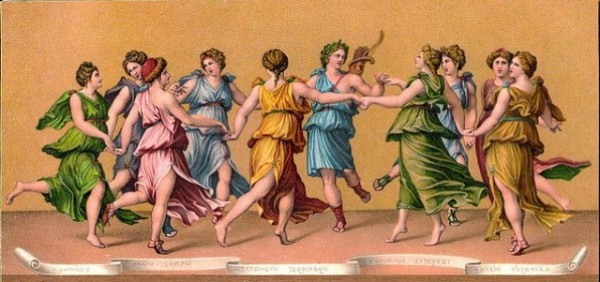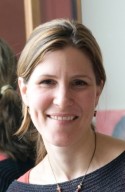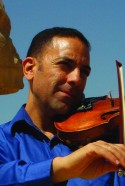
Gustav Klimt painted Adele Bloch-Bauer. Eric Clapton sang about Pattie Boyd (also known as “Layla”). Dante wrote about Beatrice. In advance of “Gustav Klimt’s Stolen Masterpiece,” a Zócalo event, a painter and composer describe their muse.
She is slightly short and gracefully curved
 My muse is named Leah. I have been painting her for a year and a half and have made over 10 paintings and half a dozen drawings. I find Leah infinitely “paintable.” Some figure models, the ones we painters melt over, look graceful and natural in almost any gesture or pose they take. Her figure is strong–from riding her bicycle as her sole mode of transportation all over the five boroughs of New York to playing accordion and doing massage–but she is not boney or “cut.” Her form is very feminine, slightly short and gracefully curved. Her work as an artist model is a commitment to both her own growth and to the artist’s production. It’s not so easy, really, to stand naked in front of someone while they scrutinize you–for hours. Every pose she takes for me shares both her outward form and her inner intention. She is completely comfortable in her own skin. This is a quality that makes her beautiful to me.
My muse is named Leah. I have been painting her for a year and a half and have made over 10 paintings and half a dozen drawings. I find Leah infinitely “paintable.” Some figure models, the ones we painters melt over, look graceful and natural in almost any gesture or pose they take. Her figure is strong–from riding her bicycle as her sole mode of transportation all over the five boroughs of New York to playing accordion and doing massage–but she is not boney or “cut.” Her form is very feminine, slightly short and gracefully curved. Her work as an artist model is a commitment to both her own growth and to the artist’s production. It’s not so easy, really, to stand naked in front of someone while they scrutinize you–for hours. Every pose she takes for me shares both her outward form and her inner intention. She is completely comfortable in her own skin. This is a quality that makes her beautiful to me.
For me, beauty is not something you find in a magazine, with pouty lips and a push-up bra. That is fashion beauty, lowercase “b.” Beauty–capital “B”–is about integrity. Integrity-wholeness–can be the biological perfection of youth, or it can be the hard-won unity of spirit and flesh from a life well lived. By this definition, my 97-year-old grandmother was very beautiful.
So Leah represents, and brings into my studio and work, the kind of Beauty I believe the world needs more of. I believe in the holiness of the body and the unity of the flesh and the spirit. In expressing the human figure I want to share my ideal that the body and spirit should be in harmony-not in opposition, or separable, or in a hierarchy.
Last year, I made a painting of Leah called “In the Garden“, (2011, Oil on canvas, 28 x 20 inches). I was also reading The Prophet (1923), in which the author Kahlil Gibran writes that beauty is “a garden forever in bloom,” and “beauty is life when life unveils her holy face.” My painting reflects this sentiment and the belief that beauty is life that is integrated and whole-spirit and flesh together–as in my muse.
Patricia Watwood is a contemporary classical painter of figures and portraits. Her solo exhibit, “Patricia Watwood: Myths and Individuals,” is on view at The Forbes Galleries, NYC, from Feb 17- June 9, 2012. Watwood’s paintings explore myth, narrative and the human presence in oil paintings and drawings.
————————————-
She dwells about the Nile
 To state the obvious, I musically compose my muse, Egypt. The title of my latest album, Egypt: Mother of the World, reveals that. As it happens, the word muse denotes one of the ancient Greek guardians who presided over musical art, and ancient Egypt had a protector of music, too. So the idea of the muse is fundamental.
To state the obvious, I musically compose my muse, Egypt. The title of my latest album, Egypt: Mother of the World, reveals that. As it happens, the word muse denotes one of the ancient Greek guardians who presided over musical art, and ancient Egypt had a protector of music, too. So the idea of the muse is fundamental.
It’s difficult to not come off as a dreamer when I describe my art, but, in a nutshell, my muse draws me closer to the source of musical inspiration: refinement and ecstasy. These are the qualities that performers of traditional Arabic music hold in esteem. The Egyptian Sufi musical method, which I’ve practiced in thousands of musical meditations and countless hours of music-making, is my muse and how I muse. They are one and the same.
Riad Abdel-Gawad lives in Southern California. He is currently an online artist for Carnegie Hall. Visit him on www.facebook.com/musicariad and at http://www.musicariad.com.
*Photo by Lynn (Gracie’s mom).



